The Daredevil Gal Pals Who Conquered the Sky
Harriet Quimby and Matilde Moisant were best friends and the first women licensed as pilots in the United States.
Matilde Moisant and Harriet Quimby were by all outward appearances proper Edwardian ladies. But looks can be deceiving. For one brilliant year in the early 1900s, these pioneering aviatrixes streaked across the sky together, becoming national heroes and media darlings—until tragedy grounded them permanently.
Harriet Quimby was the older of the two, though she would have denied it with her dying breath. Born to a down-on-its-luck family in 1875, Harriet was raised by her ambitious mother to be a freethinking and sophisticated woman. Her mother concocted a story that Harriet had in fact been born to a wealthy Boston family and shaved a remarkable eight years off of her daughter’s age. Harriet grew into a glamorous woman; Matilde would later recall her as “tall and willowy…the prettiest girl I’d ever seen. She had the most beautiful blue eyes, oh what eyes she had.”
Harriet became a well-known reporter in San Francisco, with “the best nose for news” her editor had ever encountered. In 1903, she moved to New York, where she got a job writing for the popular Leslie’s Illustrated Weekly. She became the magazine’s drama critic and women’s rights champion. In a typical story for the magazine, she advocated for women to learn how to drive and fix cars. “If husbands, fathers and brothers could look in while a class is in session,” she wrote, “they would be amazed. They would find their dainty and fastidious relatives with greasy hands and smudged faces…these women would also show the same amount of satisfaction that the average man shows in doing the work.”
In her own way, Matilde Moisant was equally unconventional. She was born in 1878 to a large, eccentric French-Canadian brood. The ladylike Matilde was the physical opposite of Harriet. She had “dark eyes, regular features, fine skin, and a trim figure,” one biographer wrote. She was “small” and appeared “even smaller beneath the enormous flower trimmed hats of the time,” and often wore a pince-nez to correct her eyesight.
Matilde spent much of her pre-flying life keeping house for her eldest brother, Alfred, at the family’s estates in boomtown Alameda, California, and El Salvador. Her handsome, reckless brother, John, became a pilot, and soon the Moisant clan became interested in the highly dangerous, high-stakes world of early aviation. The family began sponsoring air shows, and at one show Matilde was the passenger in a speeding Fiat, which Alfred sent around the track to keep antsy spectators occupied. Matilde loved the rush and longed for her beloved brother John to take her into the sky.
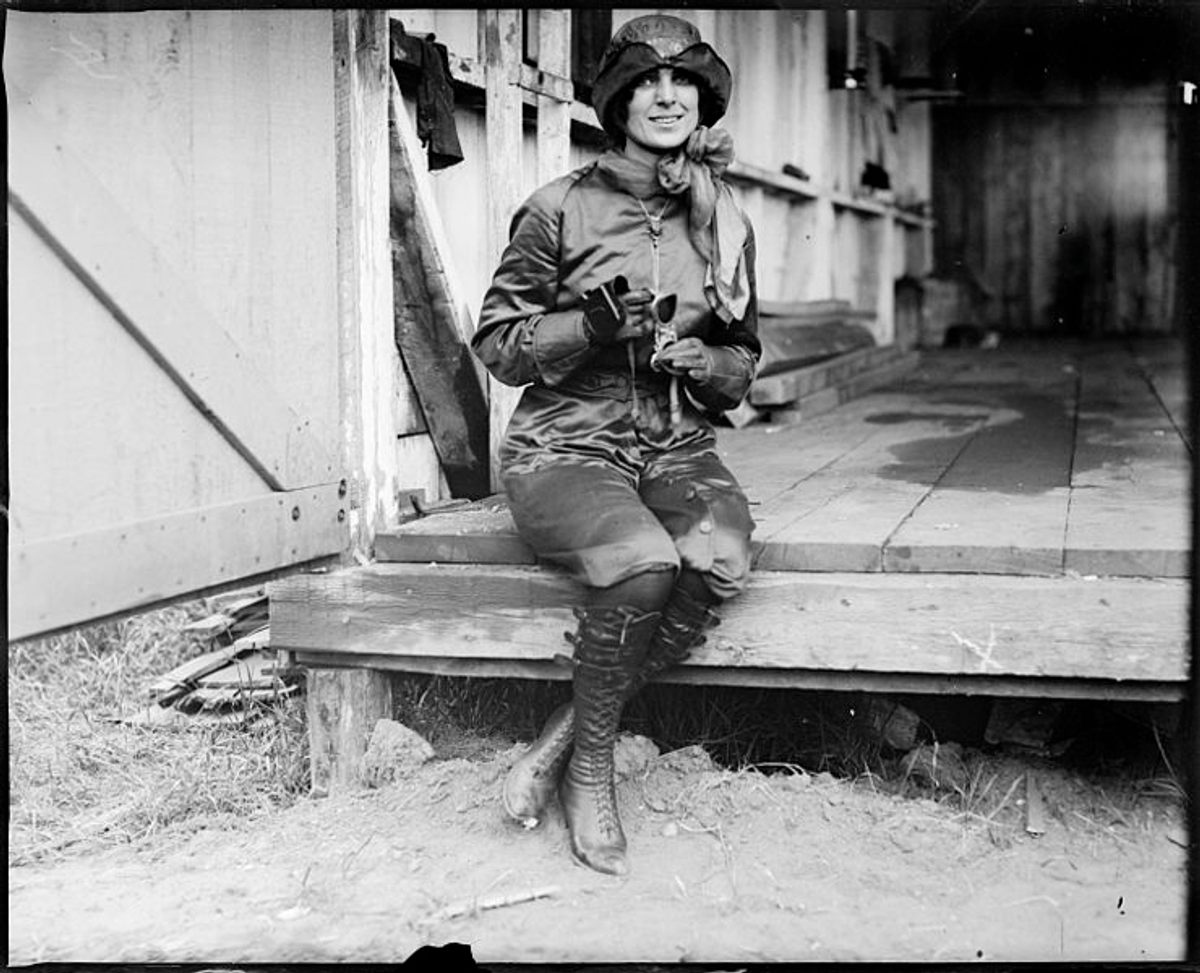
By many accounts, Harriet and Matilde met in 1910, at the legendary Belmont Park International Aviation Tournament in New York. The two had much in common; both were intelligent, unmarried women in their 30s, who were frustrated by the limitations placed on them by society. They watched as John engaged in a thrilling race to the Statue of Liberty. Harriet was dazzled by the “birdman-heroes” she saw in the air, and extracted a promise from John to teach her to fly. Tragically, John was killed less than three months later when he attempted to land his plane in high winds.
Though devastated by John’s untimely death, the Moisant family persevered. In the spring of 1911, Moisant Aviation School opened on Long Island. Harriet became one of the school’s first students, convincing her bosses at Leslie’s Illustrated Weekly to pay the $750 tuition in exchange for articles documenting her adventures in flying. She intentionally made herself conspicuously mysterious, arriving at the flight school at dawn, wearing a heavy veil. Reporters hanging around the new school quickly took the bait, and articles soon appeared about the mysterious female aviator.
“Harriet enjoyed the publicity,” Matilde, who was usually at the school, remembered. With an eye towards branding, she soon had a special flying costume designed for her by the American Tailors Association. It was an attractive purple satin jumper with a hood and cape. Harriet revealed her identity as the mysterious female flyer in an article for Leslie’s entitled, “How a Woman Learns to Fly.” In it, she disclosed the painstaking short lessons she took every morning before putting in a full day as a reporter. Early lessons included days of attempting to make the plane go in a straight line.
“This looks very easy until you discover that an aeroplane has the perversity common to all inanimate objects. It always wants to go the other way, instead of the way you seek to direct it,” she wrote. “Your first dash across the field and back takes two minutes, if no mishap occurs. After two dashes of this description, a discreet teacher will dismiss you for the day. You have had all that your nerves should be asked to stand.”
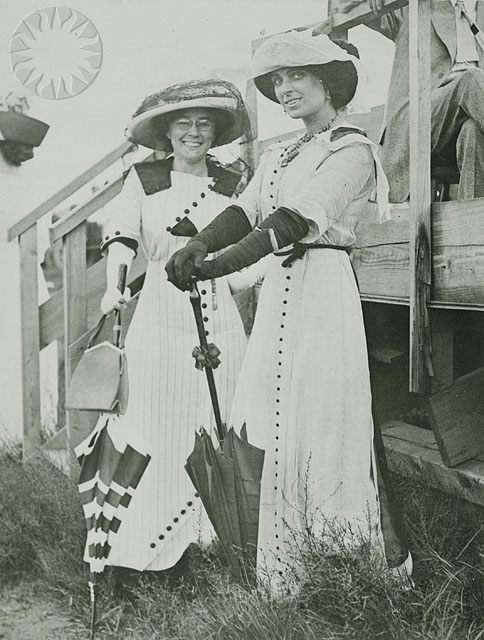
One day, Harriet asked Matilde, “Till, why don’t you come and learn to fly? You’ve got just as much sense as I have.” Though Matilde wanted nothing more, she was scared neither her brother nor society would approve. Harriet kept pushing her to join in the fun. Matilde finally got the courage to tell her brother, “Fred, I want to fly.” He agreed, and Matilde and Harriet were soon taking lessons together, along with several other students. Both women were natural-born fliers, and far surpassed most of their male contemporaries in skill and dexterity.
Within a few short weeks, they were ready to take their pilot’s license test, in front of officials from the Aero Club of America. Whoever got it first would be the first licensed female pilot in America, a huge honor. “I could have had my license first,” Matilde recalled, “but to me, I only took it up for fun. Harriet took it up for commercial reasons. She was taking care of her mother and father, and it [being first] meant a good deal to her, because she intended to make aviation her livelihood.” On July 31st, 1911, Harriet made her first attempt to obtain her pilot’s license. She missed her landing target, much to the pleasure of the scornful officials of the Aero Club. That night at a nearby hotel, Matilde encouraged her friend to try again. At breakfast, Matilde made sure to let the officials know she was also planning to take the test. “We’ll see,” they said dismissively.
That morning Harriet performed perfectly. When she landed her plane after her final test, she turned to an official and said, “Well I guess I get that license.” “I guess you do,” he replied. After her victory, Harriet encouraged Matilde to get her license soon, stating, “It would be nice to share our victories together.” Eleven days later, Matilde won her license after receiving only 32 minutes of in-air instruction time. The two friends were now the 1st and 2nd licensed female pilots in America.
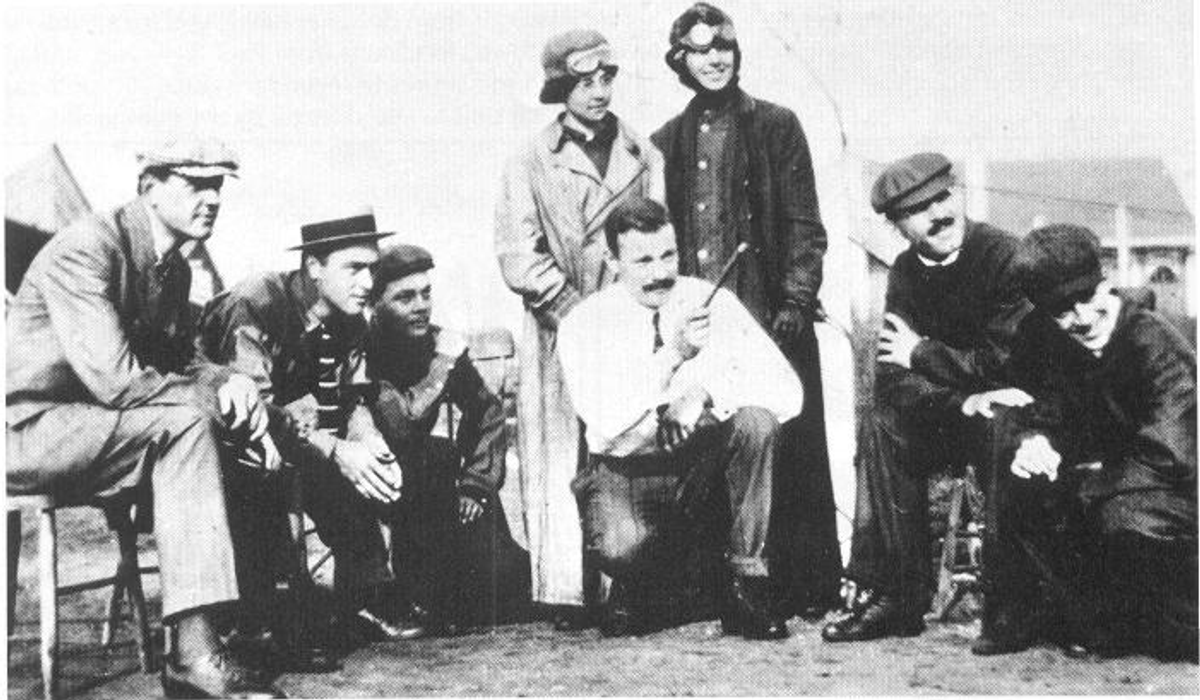
The two photogenic aviatrixes quickly became media darlings, performing in airshows sponsored by the Moisants and other pioneers. Harriet even became the spokeswoman for a purple soda called Vin Fiz. “There is a tremendous exhilaration in an early morning flight. The grass is cool and wet with dew. The air is clean and sharp and the speed at which one flies gives one an appetite for breakfast that must be experienced rather than described,” Matilde told a reporter. “I have never felt so well in my life as since I have been taking my early morning flights.”
Harriet echoed her friend’s enthusiasm, writing that flying felt “like a bird cleaving the air with outstretched wings.” Harriet also foresaw a liberating future for female aviators. “The airplane should open a fruitful occupation for women,” she stated. “I see no reason they cannot realize handsome incomes by carrying passengers between adjacent towns, from parcel delivery, taking photographs or conducting schools of flying.” Both women maintained their sex was “born to the sport,” due to womanly intuition and cool instincts.
Over the next few months, both Matilde and Harriet performed daring feats that dazzled America. Though Matilde was often described as a fragile “lady” suited more for “afternoon teas than the airfield,” she seemed to share the daredevil streak of her brother John. In September 1911, Matilde soared to the breathtaking height of 1200 feet. On another flight, she encountered the wrath of police officials, who attempted to ban flying on Sundays. “So, I’ll be arrested if I fly, will I?” she said to her friends. She defiantly took to the sky, while police cars chased her from the ground. When she landed, a supportive mob prevented her arrest.
Harriet’s flight at the Richmond County Agricultural Fair of Staten Island interrupted a speech being given by future president Woodrow Wilson. A reporter explained that Wilson “could not possibly hold the attention of his audience, until [the sound of Miss Quimby’s motor] had faded in the distance.” Harriet also continued writing for Leslie’s, and also dabbled in writing for motion pictures. She wrote several produced screenplays for Biograph Pictures.
On November 1st, Harriet and Matilde left with other Moisant aviators to perform a series of airshows sponsored by the Mexican government. Matilde became the first woman to fly over Mexico (Harriet was the second). However, political turmoil (the country was just coming out of the very bloody Mexican Revolution), poor attendance and bad weather made the trip a disaster. Harriet left Mexico early. Soon after, she left the Moisants and became represented by her rumored boyfriend, A. Leo Stevens. Matilde stayed in Mexico, bravely leading the remaining crew through rebel territory and back to America.
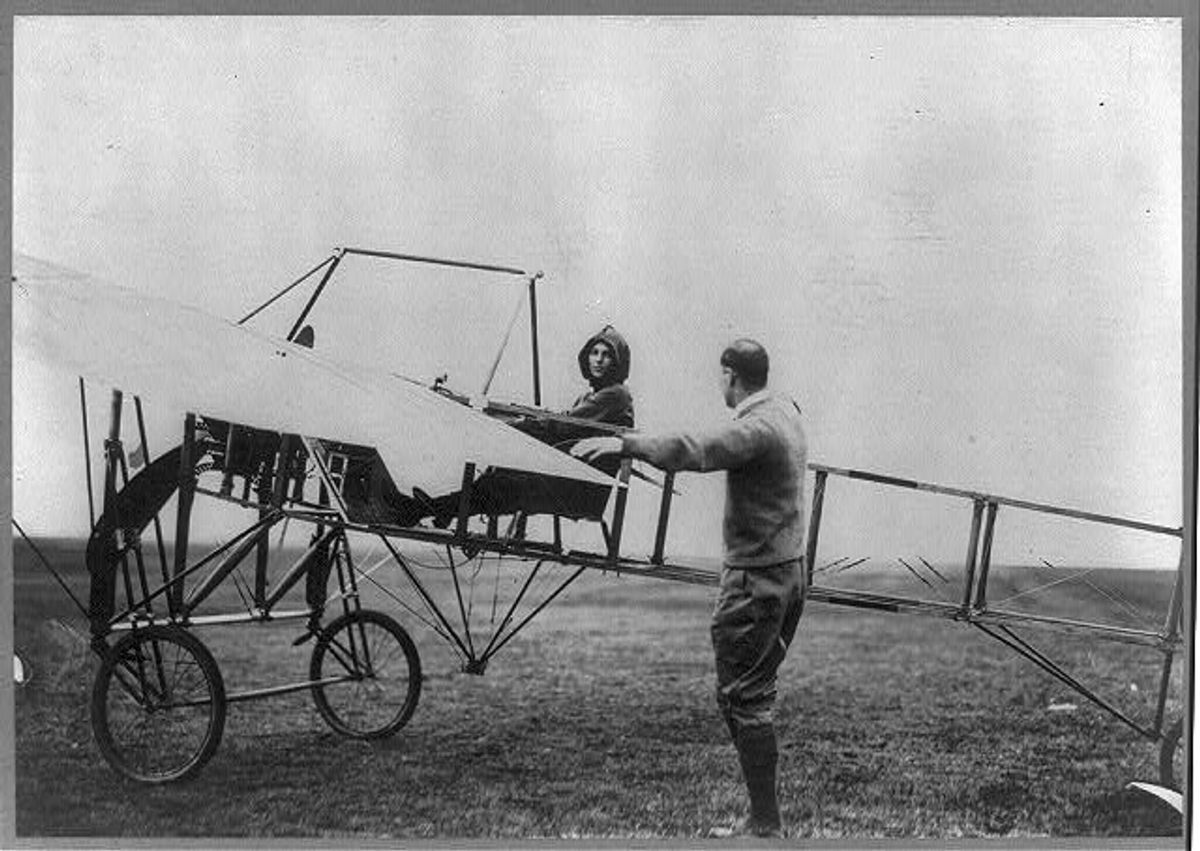
After Harriet left, it seems Matilde’s drive to fly diminished. Near-misses of her own, and the deaths of several prominent aviators made Matilde consider retiring from the sport. But she was torn. “I have air intoxication, and only a flier knows what that means,” she explained.
She finally announced that her last flight would be on April 14th, 1912, in Wichita, Texas. It seems she left just in time. On her last flight, her plane crashed and burst into flames, burning her face and neck. However, she walked away from the crash with her head held high. “The earth is bound to get us after a while,” she said prophetically.
Two days later, on April 16th, her old friend Harriet, now often called “the first lady of the air,” became the first woman to fly across the English Channel. When she arrived in Calais after the early morning flight, she was feted by local peasants, friends, and reporters, hoisted into the air and given a large, welcome cup of hot tea. She was “a very tired but happy woman.”
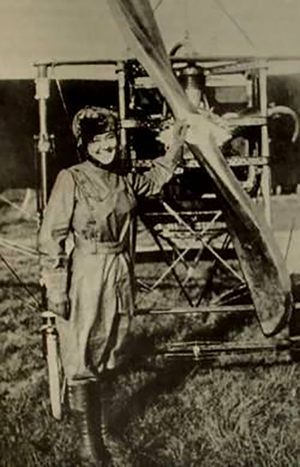
Although she had just retired, Matilde could not help but tell reporters, “Nothing has pleased me more than to hear of Miss Quimby’s achievement. Although I had my eye on doing the same thing.” However, both Matilde’s retirement and Harriet’s triumph were overshadowed by the sinking of the Titanic, much to their chagrin.
On July 1st, 1912, Harriet fell out of her plane during a flight in Squantum, Mass. She died instantly. Her dazzling career had lasted only 15 months. Matilde lived until 1964. She spent World War I with the Red Cross and spent many years living in El Salvador and Glendale, California. She rarely spoke of her good friend and the dizzying few months they had shared.
Perhaps their feeling about flight is best summed up by an aside Harriet once said to her mother, after disembarking from her plane. “It was grand. I did not feel like ever coming to earth again.”
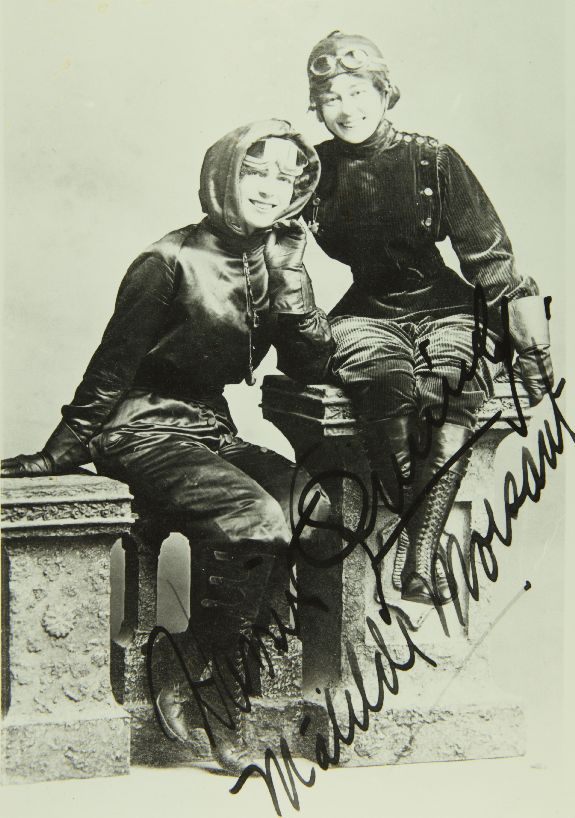





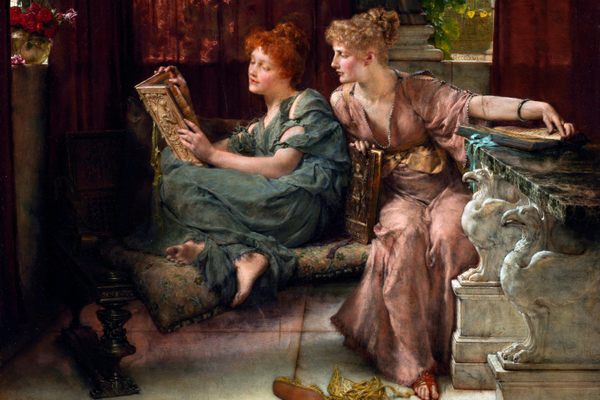















Follow us on Twitter to get the latest on the world's hidden wonders.
Like us on Facebook to get the latest on the world's hidden wonders.
Follow us on Twitter Like us on Facebook